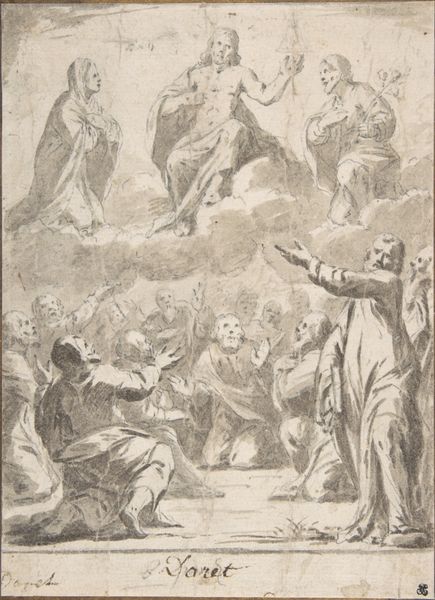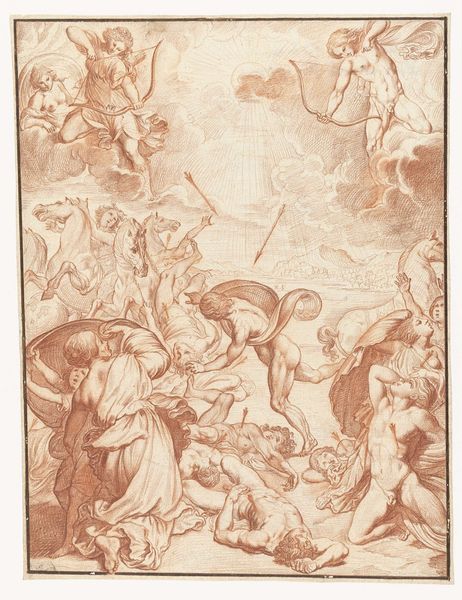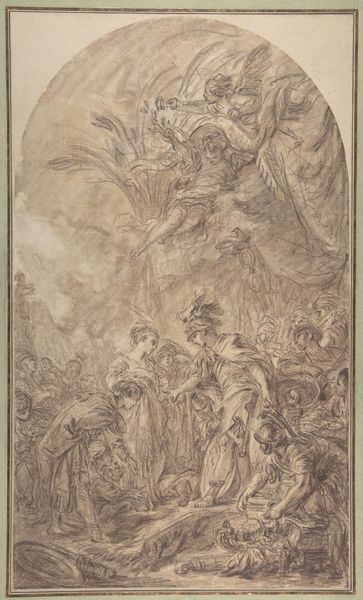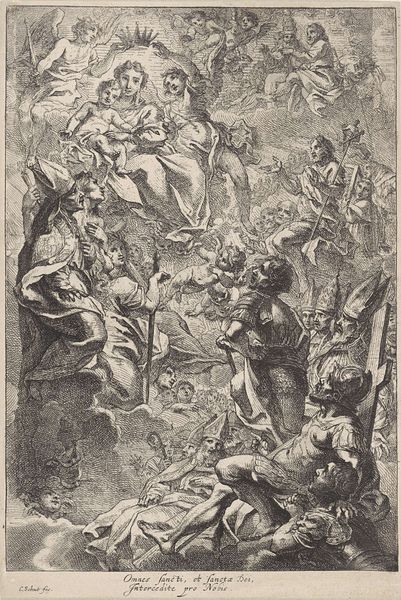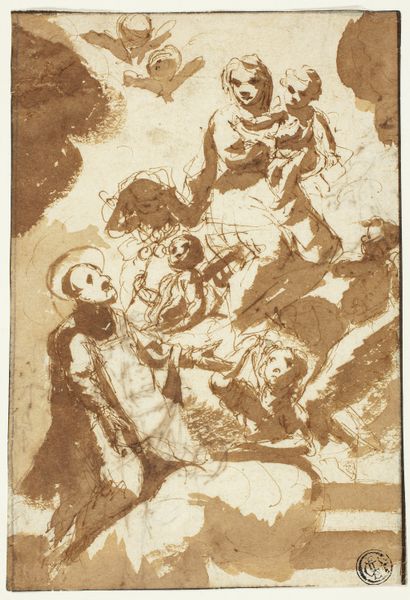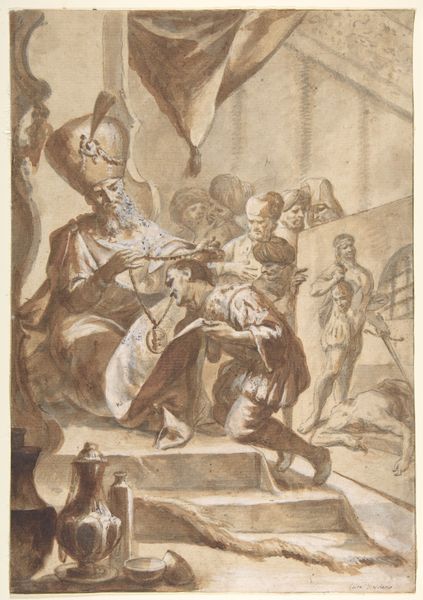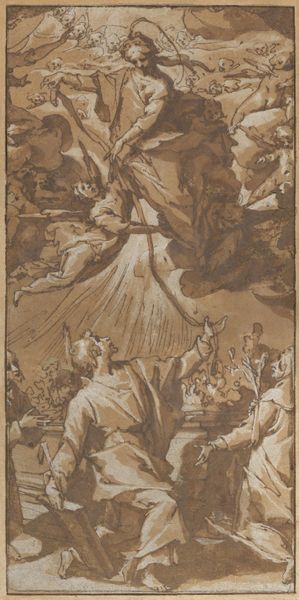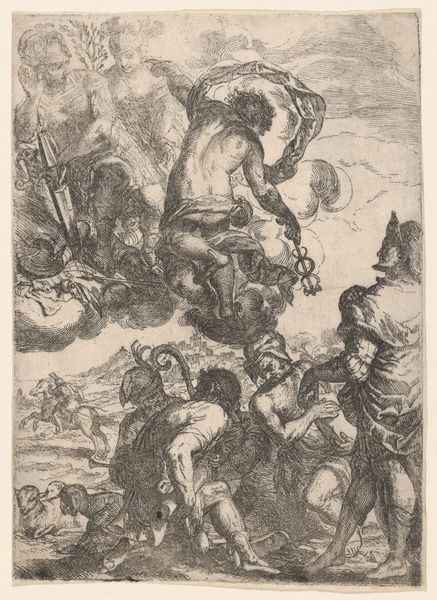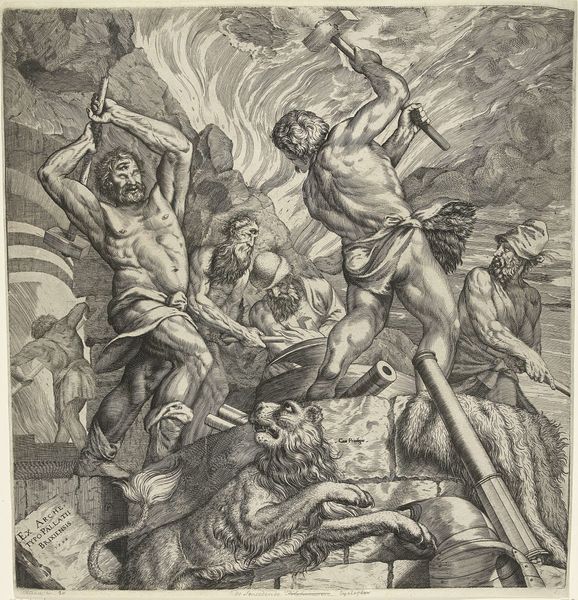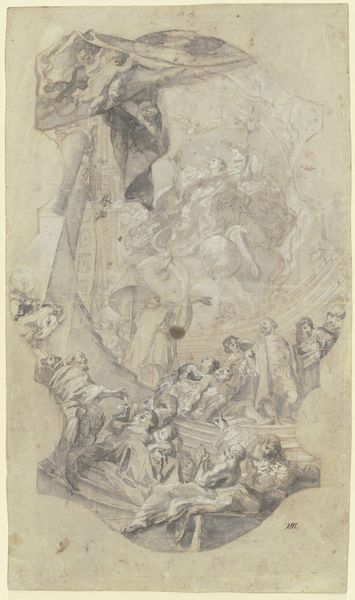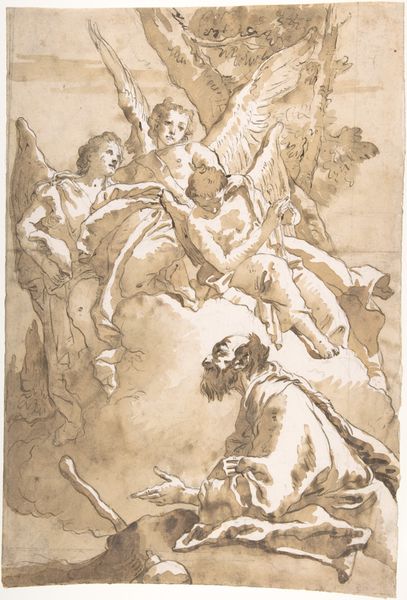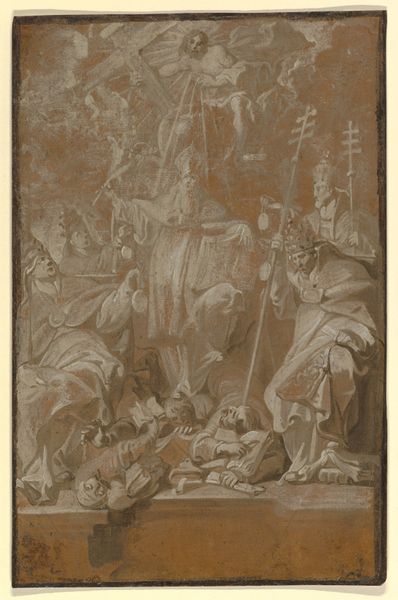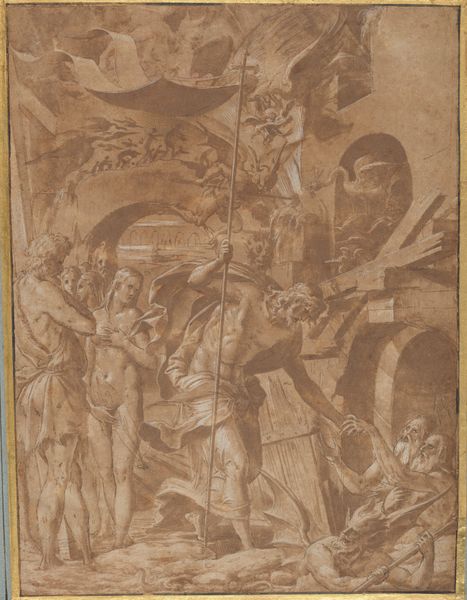
drawing, print
#
drawing
#
allegory
# print
#
charcoal drawing
#
mannerism
#
figuration
#
history-painting
Dimensions: Overall: 11 1/4 x 8 5/16 in. (28.6 x 21.1 cm)
Copyright: Public Domain
Curator: Looking at this work, my initial impression is one of chaos, of a grand struggle depicted in warm, sepia tones. Editor: This is Jacopo Zucchi’s "Jupiter Fighting the Giants," likely created between 1540 and 1596. It's a drawing, likely intended as a print, showcasing Zucchi's mastery of Mannerist style. Let's unpack that "chaos" through a historical lens. The late Renaissance was a period of enormous social and religious upheaval; do you think Zucchi taps into any of that? Curator: Absolutely. I see this through the lens of power dynamics. Jupiter's dominance, quite literally over the giants, speaks to established hierarchies—social, political, even cosmic ones. These mythological narratives provided a space for considering very real tensions present in Renaissance society, particularly regarding gendered power dynamics with male-dominated structures of society as mirrored through narratives such as this where male Gods, literally, are victorious and crushing anything, that is seen as chaotic. The "giants" might symbolize any group challenging the status quo. Editor: That's a fascinating take. What strikes me are the visual strategies involved. The dynamism, the swirling figures, they aim to express powerful and dominant entities who controlled society through all visual representation, and Jupiter had divine status and an almost propagandist visual goal within Zucchi's drawing that reflected society. Zucchi employs classical allegories, specifically focusing on the theme of history painting with figurative focus. It really underlines how this visual narrative fits within its historical setting. Curator: Yes, and if we think about the giants as perhaps representing marginalized populations— those denied a voice—the image becomes even more fraught with meaning in the context of social justice and a struggle of suppression, not only dominance in power. The warm sepia tones and printmaking medium itself evokes a sense of distance, as we try to look deeper in historical injustices. Editor: These are complex historical powerplays expressed on paper. It underscores the intersection of art and societal forces in that time period. The Met, holding a physical copy of Zucchi’s art provides an avenue to engage in the discussion. Curator: And it reminds us that even mythological scenes are deeply entwined with the real-world power structures and lived experiences of their time. Editor: A reminder indeed to examine the institutions and societal struggles reflected in visual expression through time.
Comments
No comments
Be the first to comment and join the conversation on the ultimate creative platform.
